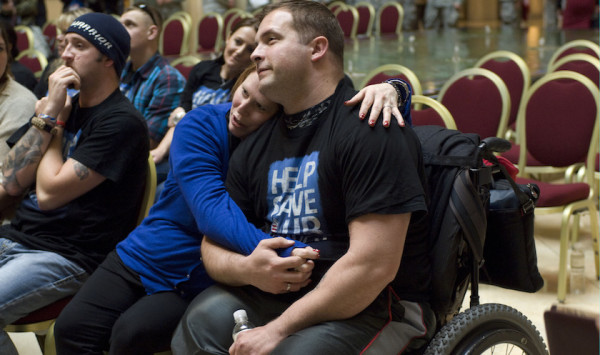

Roughly 5.5 million people serve as caregivers for veteran family members. The Department of Veterans Affairs has a lesser known benefit for these family members. Known as Caregiver Support Services, these benefits aim to help family members who are tasked with the primary care of a disabled veteran.
The services available include access to a caregiver support line, support coordinator, peer support for caregivers, adult day health care centers, and home care, among other things.
One portion of this benefit — aimed specifically at post-9/11 veterans’ families — is the services for family caregivers of post-9/11 veterans under the “Caregivers and Veterans Omnibus Health Services Act of 2010.”
Those benefits can include access to a monthly stipend, travel expenses, health insurance, mental health services, VA caregiver training provided by Easter Seals, and respite care, and are meant to ease both the physical, mental, and sometimes financial burden of supporting a veteran as a caregiver.
Related: Here’s a VA benefit we bet you didn’t know about »
If awarded, the stipend amount is based on the weekly number of hours of personal care services that an eligible veteran requires during the month. In order to determine the scope of benefits offered to a caregiver, the VA assigns a patient-aligned care team, which uses a three-tier system to evaluate the eligible veteran.
According to the VA, a high-tier veteran equates to a maximum of 40 hours of care per week. the medium tier equates to a maximum of 25 hours of care per week, and the low tier equates to a maximum of 10 hours of care per week.
Task & Purpose spoke with caregiver Emery Popoloski, who is currently receiving aid under the program, about her experience with the VA’s caregiver program. Her husband is a combat disabled veteran who fought in Iraq.
“I was about a year and a half into my caregiver journey … I was just 25,” she said. “All my friends were just getting married, nobody had kids, nobody understood what it was like to have a spouse that was 100% dependent on me.”
That is the importance of the program, she said. It not only connects caregivers to services like stipends and in-home care, but also provides a network of people who are going through similar experiences.
Being well-versed in the program, Popoloski now serves as the caregiver community program coordinator at the Elizabeth Dole Foundation — a group that helps military families and caregivers by strengthening the services afforded to them. She was recently promoted to serve as their fellowship program coordinator.
Her work has also led her to involvement with the Tragedy Assistance Program for Survivors, which is one of a number of groups that helps to connect veterans and their families to these services.
Lynda Davis, executive vice president of the Tragedy Assistance Program for Survivors, told Task & Purpose in an interview that the 5.5 million caregivers across the country support veterans of all the U.S. wars. Roughly 1.2 million of them are caregivers to post-9/11 veterans.
“Our intention is to reach all of the 5.5 million caregivers,” Davis said. “We provide an open, public, resource library on a variety of topics that are key to caregivers.”
If you are not sure where to start, the VA offers an eligibility checklist. However, Popoloski suggested that anyone caring for a veteran should consider contacting an advocacy group like Veterans of Foreign Wars, The American Legion, or TAPS for more information.